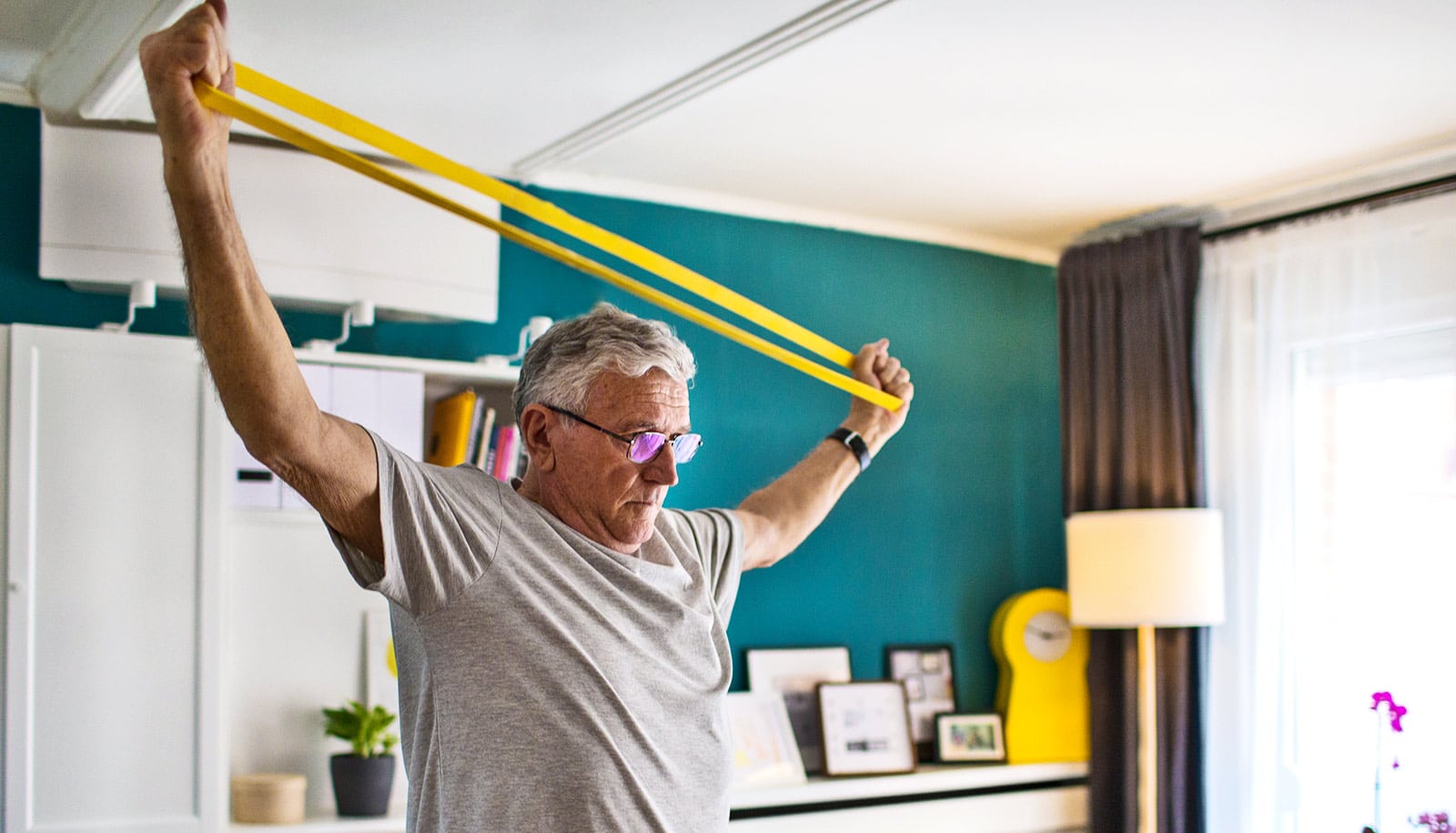Struggling with doing physical therapy exercises at home? Experts have some tips for you on how to stay motivated and keep up with at-home routines.
Benton Lindaman, Michael Clarke, and Jeff Foucrier, physical therapy faculty members in the Tufts University School of Medicine rehabilitation sciences department, have worked for years with patients who face challenges when it comes to keeping up with physical therapy exercises at home.
The experts agree: if you have any doubt about what a physical therapist sent you home to do, or their assignments are proving to be impractical—speak up. Physical therapists want to work with you, instead of against you, towards progress.
Here, they explain five things to remember to get the most of physical therapy at home:
1. Keep the why in mind
Not many people really want to do physical therapy exercises at home, and it’s easy to let it slide when work, family, friends, and outside obligations are all fighting for your free time.
Keeping the reason for physical therapy in mind can help. Lindaman asks his patients “what brought you in the door in the first place?” Their answers become motivators, and it helps to make them specific, such as a patient wanting to recover from an injury to be able to walk or hike with their dog or play with their grandchildren.
2. Set realistic goals
When you first start physical therapy, you may be tempted to load up on exercises so you can make progress as fast as possible. That’s a worthy goal, but it can be a set up for failure. Too much, too soon, can be overwhelming, even for experienced athletes who are used to long bouts of exercise.
“If you’re given eight to 10 exercises to do at home, the likelihood of them not being performed goes up,” says Clarke. It’s just too much change at once.
Instead, work with your physical therapist to identify a handful of exercises—even just one or two—with related goals that will get you on track. And once those goals are met, celebrate! No matter how small those wins seem, they’re important stepping stones on your physical therapy journey.
“If we don’t celebrate wins, we have the tendency to lose steam,” says Foucrier. “These are really subtle changes that can greatly impact your life over time, so it’s important to cheer yourself on when you can.”
3. Let images be your guide
Physical therapists are going to give you homework in the form of exercises to do at home, even if you’re coming into the clinic a few days a week. Having a visual guide can help, which could be handouts or a video demonstrating the exercises that your physical therapist can point you to.
Lindaman has also taken videos of patients doing their workouts in clinic, using their own phones to do so. That way, they can refer to the videos of themselves doing the movement properly.
“A video to reference can be extremely helpful and a way to self-monitor your own body,” he says. “It’s not uncommon to forget exactly what to do because it’s been a couple of days since your session. Visuals can help.”
4. If home physical therapy hurts, stop
Even with printed and video guides, patients may still do exercises in a way that aggravates pain at home.
Instead of trying to gut through the pain, stop, says Foucrier. If the pain goes away after four to five minutes, go back to the movement. If it continues to persist, wait another 20 to 30 minutes. And if it still hurts then, wait a day or two before trying again, and let your physical therapist know.
In general, Foucrier notes, “there’s no bad movement unless pain increases.” Part of his work is educating patients so that they’re aware of what is happening to their bodies, and what is good pain (i.e. soreness after a good work out), bad pain (something’s gone wrong), and lessening pain (where an ache still exists, but the severity has ebbed). It’s not always easy to differentiate, which is why even professional athletes will try to persist through pain and get hurt, so don’t feel bad if you can’t tell the difference right away.
5. Be open with your physical therapist
And, of course, tell your physical therapist if doing something at home hurts, if you’re having trouble with a movement, or if your environment isn’t conducive to the exercises they suggested. For example, doing exercises on the floor five to 10 times a day might be unrealistic for someone who works in an office, which means it just won’t get done.
Your physical therapist wants you to speak up, says Clarke. “I very much appreciate and value when patients are coming back with questions and voicing those concerns or barriers they have,” he notes, adding that there are so many different ways to address a problem. Physical therapists want to work together to “adjust and modify exercise so that it’s more valuable to the patient, and will help them meet their goals.”
Source: Jen Miller for Tufts University




















Discussion about this post